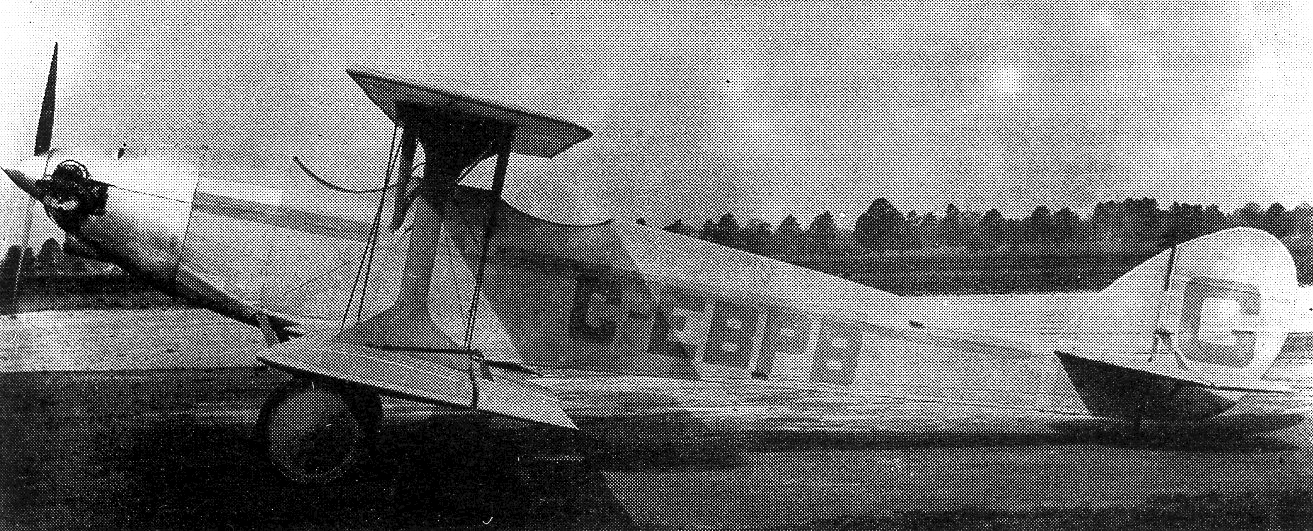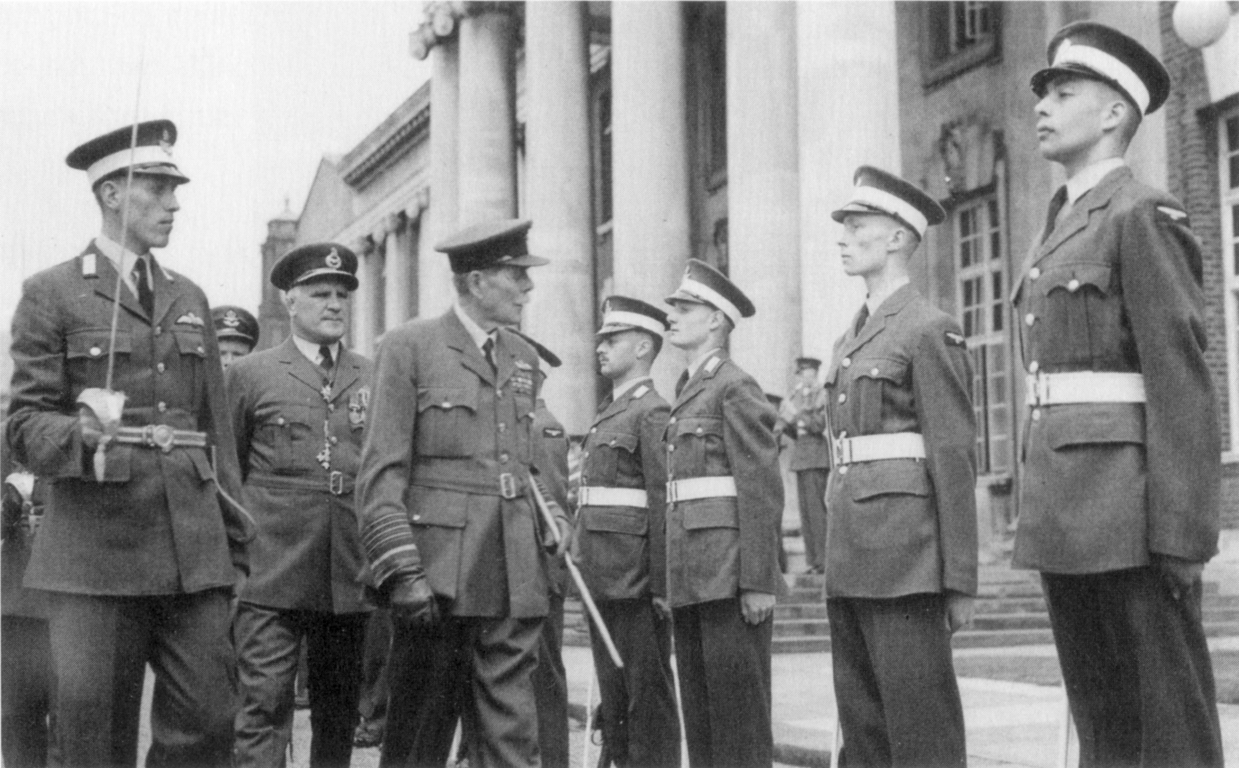|
Cranwell Light Aeroplane Club
The Cranwell Light Aeroplane Club was formed in 1923 by staff and students of the RAF College Cranwell to design and build light aircraft. One of the members was Flight Lieutenant Nicholas Comper who became the Chief Designer. Comper and the club designed and built four aircraft with the last three types being flown. Aircraft *CLA.1 - The Cranwell CLA.1 was the first attempt by the Club to design an aircraft but was never built. *CLA.2 - The Cranwell CLA.2 was a two-seat single-engined biplane designed and built for the 1924 Lympne light aircraft trials. It was first flown at Cranwell at 14 September 1924 and went on to win the £300 Reliability Prize at Lympne. After the light plane trials the CLA.2 went to RAF Martlesham Heath for evaluation but it was written off by an Air Ministry pilot. The Air Ministry compensated the club for the loss and this was used to fund the next project. *CLA.3 - The Cranwell CLA.3 was designed to compete in the 1925 Lympne light aircraft trials ... [...More Info...] [...Related Items...] OR: [Wikipedia] [Google] [Baidu] |
RAF College Cranwell
The Royal Air Force College (RAFC) is the Royal Air Force military academy which provides initial training to all RAF personnel who are preparing to become commissioned officers. The College also provides initial training to aircrew cadets and is responsible for all RAF recruiting along with officer and aircrew selection. Originally established as a naval aviation training centre during World War I, the College was established as the world's first air academy in 1919. During World War II, the College was closed and its facilities were used as a flying training school. Reopening after the War, the College absorbed the Royal Air Force Technical College in 1966. The Royal Air Force College is based at RAF Cranwell near Sleaford in Lincolnshire, and is sometimes titled as the Royal Air Force College Cranwell. History Early years In December 1915, after the Royal Naval Air Service had broken away from the Royal Flying Corps, Commodore Godfrey Paine was sent to Cranwell to start a ... [...More Info...] [...Related Items...] OR: [Wikipedia] [Google] [Baidu] |
Nicholas Comper
Nicholas Comper (29 April 1897 – 17 June 1939) was an English aviator and aircraft designer, whose most notable success was the 1930s Comper Swift monoplane racer. Early life Nicholas Comper was born in Lambeth, London, England, the son of church architect Sir John Ninian Comper. After leaving Dulwich College, he joined the Aircraft Manufacturing Company (Airco) as an apprentice. He left the company in 1915 to join the Royal Flying Corps, and was trained to fly at Castle Bromwich Aerodrome. He joined No. 9 Squadron RFC, and was posted to Morlancourt in France, flying B.E.2c aircraft on reconnaissance missions.Nick Comper official websiteRiding (2003) After World War I, Comper stayed in what was then the Royal Air Force, and in 1920 he studied aerodynamics at Jesus College, Cambridge. He spent time with RAE Farnborough, and in October 1922 he was posted to RAF Cranwell to train engineering officers. One of his pupils was Frank Whittle, the jet engine pioneer. In 1923, Com ... [...More Info...] [...Related Items...] OR: [Wikipedia] [Google] [Baidu] |
Cranwell CLA
Cranwell is a village in the North Kesteven district of Lincolnshire, England. It is part of the civil parish of Cranwell and Byard's Leap and is situated approximately north-west from Sleaford and south-east from the city and county town of Lincoln. The principal through road, the B1429 between the A15 to the east and the A17 to the west, joins the village to RAF Cranwell. The appropriate civil parish is called Cranwell, Brauncewell and Byard's Leap with a population of 2,827 at the 2011 census. History During the medieval period the parish was originally governed as part of the ancient Flaxwell Wapentake in the North Kesteven division of Lincolnshire. The name Cranwell is thought to mean the spring or stream frequented by cranes or herons. The village centres on the remains of the village cross. The cross is a 14th-century market cross (or buttercross) from which important matters of public moment were announced. The cross, which is listed as a scheduled monument, had r ... [...More Info...] [...Related Items...] OR: [Wikipedia] [Google] [Baidu] |
Lympne Light Aircraft Trials
The Lympne Light Aircraft Trials were held to encourage the development of practical light aircraft for private ownership, with a strong but not exclusive emphasis on fuel economy. They were held in 1923, 1924 and 1926. Each year saw different restrictions on engine size, framed initially in terms of capacity and then weight. The ''Daily Mail'' newspaper provided cash prizes throughout though the initiating donation came from the Duke of Sutherland. The Air Ministry were prize givers in the 1924 event. The trials were held at Lympne in Kent, England. The background The Lympne events had their origin in the post-World War I state of aviation in Britain and in Germany. Military aircraft production stopped immediately after the war ended. In Britain there were large stocks of surplus aircraft available at low prices, making it hard for manufacturers to develop new models. Airlines were only slowly emerging, largely using converted military aeroplanes and having not found a certain eco ... [...More Info...] [...Related Items...] OR: [Wikipedia] [Google] [Baidu] |
RAF Martlesham Heath
Royal Air Force Martlesham Heath or more simply RAF Martlesham Heath is a former Royal Air Force station located southwest of Woodbridge, Suffolk, England. It was active between 1917 and 1963, and played an important role in the development of Airborne Interception radar. History RFC/RAF prewar use Martlesham Heath was first used as a Royal Flying Corps airfield during the First World War. In 1917 it became home to the Aeroplane Experimental Unit, RFC which moved from Upavon with the site named as the Aeroplane Experimental Station which became the Aeroplane Experimental Establishment (Home) in 1920 which became the Aeroplane and Armament Experimental Establishment (A&AEE) in 1924. The A&AEE carried the evaluation and testing of many of the aircraft types and much of the armament and other equipment that would later be used during the Second World War. No. 22 Squadron RAF and No. 15 Squadron RAF were present during the 1920s. No. 64 arrived in the 1930s. RAF Fighter Command ... [...More Info...] [...Related Items...] OR: [Wikipedia] [Google] [Baidu] |
Air Ministry
The Air Ministry was a department of the Government of the United Kingdom with the responsibility of managing the affairs of the Royal Air Force, that existed from 1918 to 1964. It was under the political authority of the Secretary of State for Air. Organisations before the Air Ministry The Air Committee On 13 April 1912, less than two weeks after the creation of the Royal Flying Corps (which initially consisted of both a naval and a military wing), an Air Committee was established to act as an intermediary between the Admiralty and the War Office in matters relating to aviation. The new Air Committee was composed of representatives of the two war ministries, and although it could make recommendations, it lacked executive authority. The recommendations of the Air Committee had to be ratified by the Admiralty Board and the Imperial General Staff and, in consequence, the Committee was not particularly effective. The increasing separation of army and naval aviation from 191 ... [...More Info...] [...Related Items...] OR: [Wikipedia] [Google] [Baidu] |
Bristol Cherub
The Bristol Cherub is a British two-cylinder, air-cooled, aircraft engine designed and built by the Bristol Aeroplane Company. Introduced in 1923 it was a popular engine for ultralight and small aircraft in the 1930s. Variants ;Cherub I :Initial direct drive version introduced in 1923. Bore and stroke of for a displacement of 67 cu in (1.095 L). at 2,500 rpm. ;Cherub II :Geared down (2:1) version of the Cherub I. ;Cherub III :An improved and slightly larger (1.228 L) direct drive version introduced in 1925. Applications Survivors An airworthy Messerschmitt M17 replica is owned and operated by the EADS Heritage Flight at Manching and is powered by an original Bristol Cherub III. Retrieved: 9 August 2009 Engines on display A preserved Bristol Cheru ...[...More Info...] [...Related Items...] OR: [Wikipedia] [Google] [Baidu] |
Comper Swift
The Comper C.L.A.7 Swift is a British 1930s single-seat sporting aircraft produced by Comper Aircraft Company Ltd of Hooton Park, Cheshire. Design and development In March 1929 Flight Lieutenant Nicholas Comper left the Royal Air Force and formed the Comper Aircraft Company to build an aircraft he had designed, the Comper Swift. He had previously designed and flown three aircraft for the Cranwell Light Aeroplane Club: the C.L.A.2, C.L.A.3 and C.L.A.4. The prototype Swift (registered G-AARX) first flew at Hooton Park in January 1930.Meaden (2003) The aircraft was a small single-seat, braced high-wing monoplane constructed of fabric-covered spruce wood frames.Riding (2003) The first Swift was powered by a 40 hp (30 kW) ABC Scorpion piston engine. After successful tests, seven more aircraft were built in 1930, powered by a 50 hp Salmson A.D.9 radial engine. Trials with Pobjoy P radial engine for use in air racing resulted in all the subsequent aircraft being pow ... [...More Info...] [...Related Items...] OR: [Wikipedia] [Google] [Baidu] |
Comper Aircraft Company
The Comper Aircraft Company Ltd was a 1930s British light aircraft manufacturer. It was based at Hooton Aerodrome, Cheshire (1929-1933), and Heston Aerodrome, Middlesex (1933-1934). History In April 1929, after leaving the Royal Air Force, Nicholas Comper formed the Comper Aircraft Company Ltd, based at Hooton Park Aerodrome near Ellesmere Port in Cheshire. Company directors included his brother Adrian Comper, his colleague Flt Lt J. Bernard Allen, George H Dawson, the owner of Hooton Park Aerodrome, and others. The company's first product was the Comper Swift, a single-seat sporting monoplane. After the prototype flew in January 1930, 40 production examples were built at Hooton. In 1932, in a joint venture, the company produced a prototype of the Cierva C.25 autogyro, using major elements of a Comper Swift.Riding (2003)Nick Comper official website In March 1933, after producing about 41 aircraft, the company moved to Heston Aerodrome near London. The first aircraft built at H ... [...More Info...] [...Related Items...] OR: [Wikipedia] [Google] [Baidu] |
Companies Based In Lincolnshire
A company, abbreviated as co., is a legal entity representing an association of people, whether natural, legal or a mixture of both, with a specific objective. Company members share a common purpose and unite to achieve specific, declared goals. Companies take various forms, such as: * voluntary associations, which may include nonprofit organizations * business entities, whose aim is generating profit * financial entities and banks * programs or educational institutions A company can be created as a legal person so that the company itself has limited liability as members perform or fail to discharge their duty according to the publicly declared incorporation, or published policy. When a company closes, it may need to be liquidated to avoid further legal obligations. Companies may associate and collectively register themselves as new companies; the resulting entities are often known as corporate groups. Meanings and definitions A company can be defined as an "artificial per ... [...More Info...] [...Related Items...] OR: [Wikipedia] [Google] [Baidu] |
Defunct Aircraft Manufacturers Of The United Kingdom
{{Disambiguation ...
Defunct (no longer in use or active) may refer to: * ''Defunct'' (video game), 2014 * Zombie process or defunct process, in Unix-like operating systems See also * * :Former entities * End-of-life product * Obsolescence Obsolescence is the state of being which occurs when an object, service, or practice is no longer maintained or required even though it may still be in good working order. It usually happens when something that is more efficient or less risky r ... [...More Info...] [...Related Items...] OR: [Wikipedia] [Google] [Baidu] |




